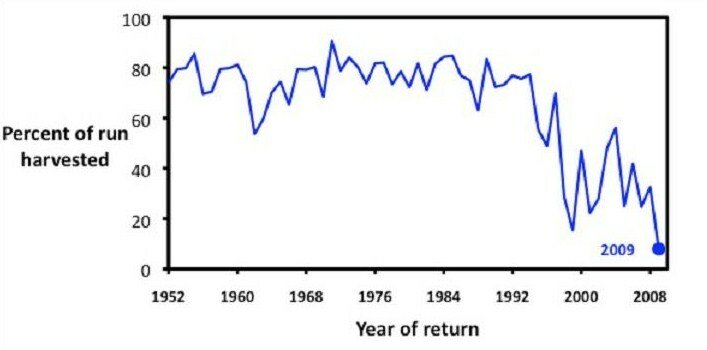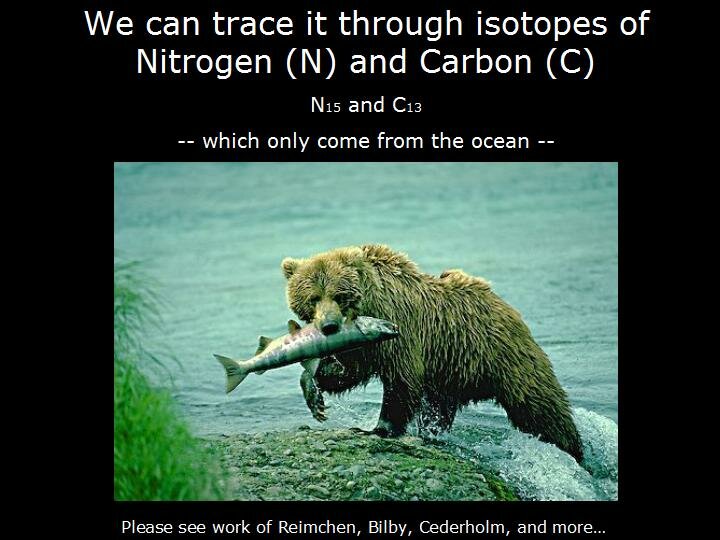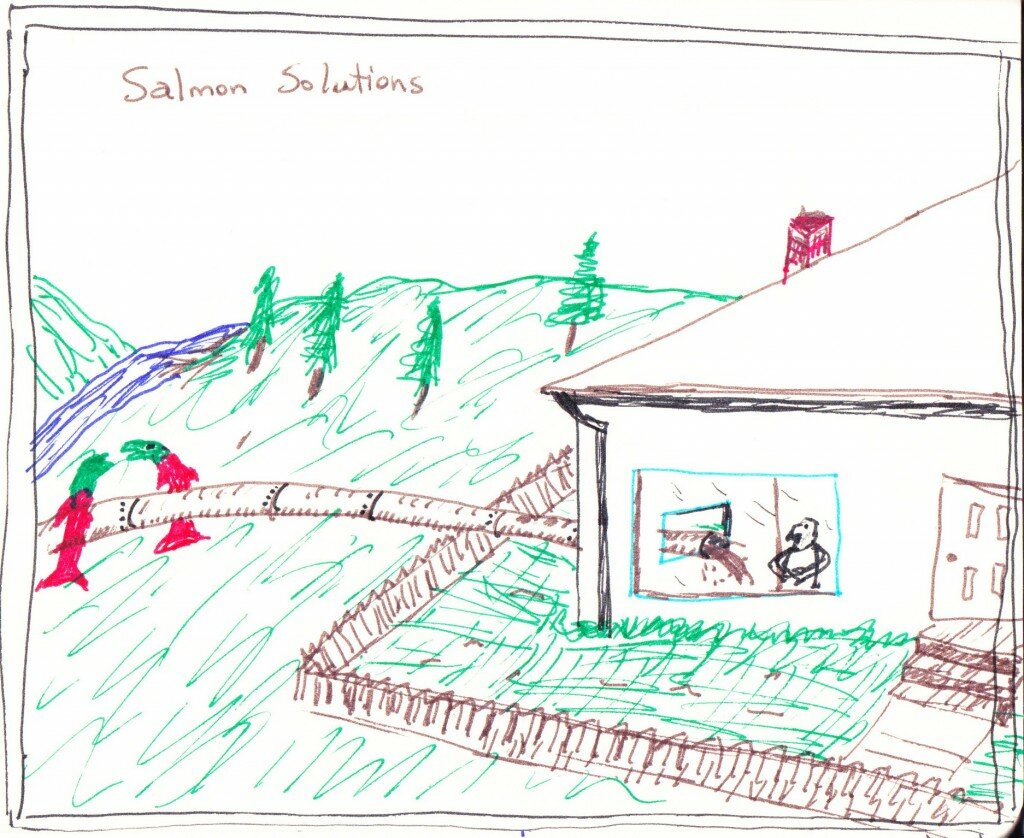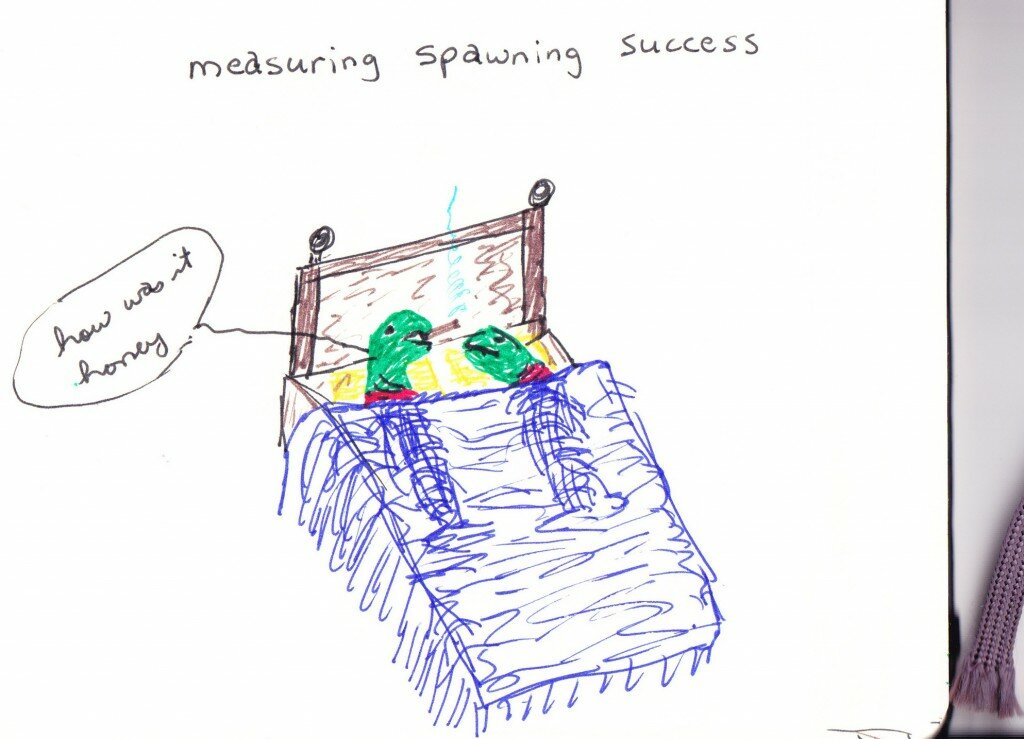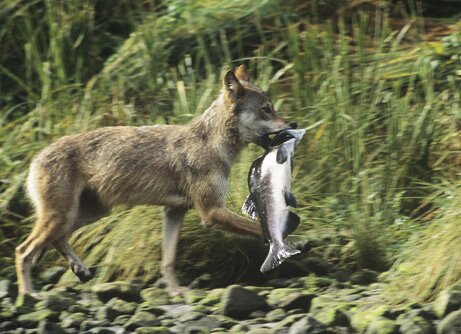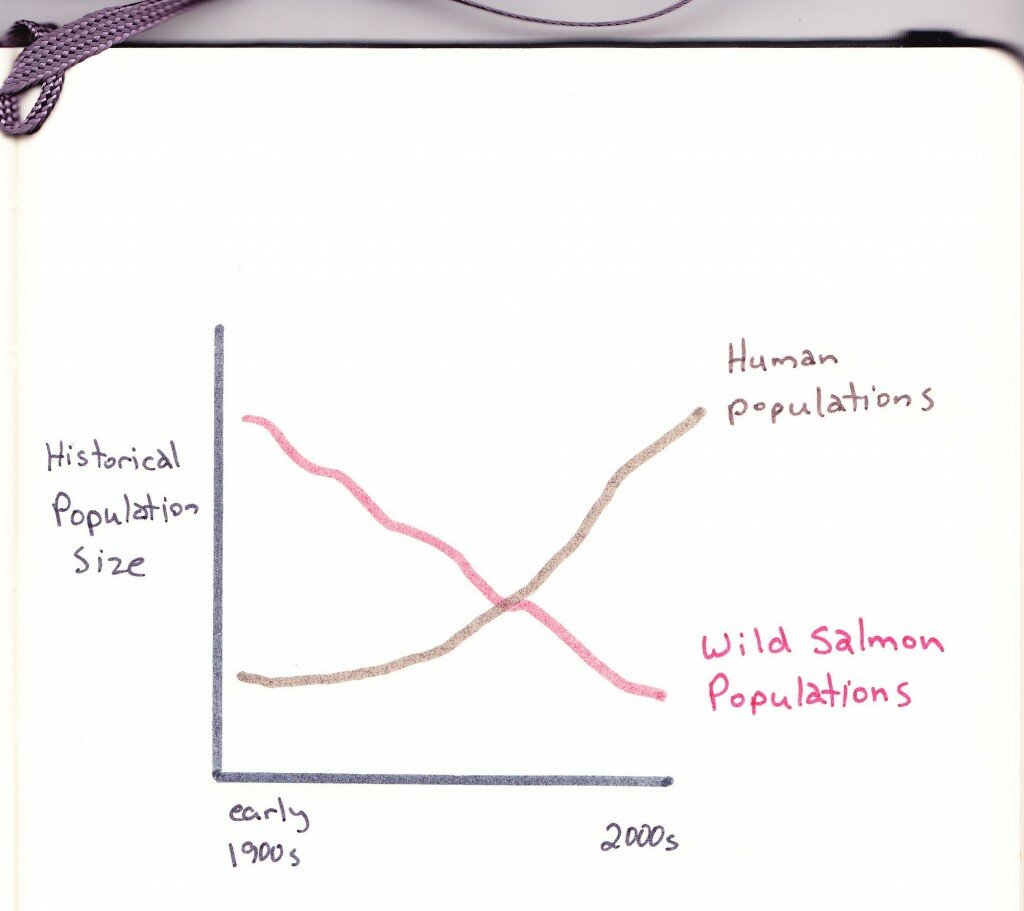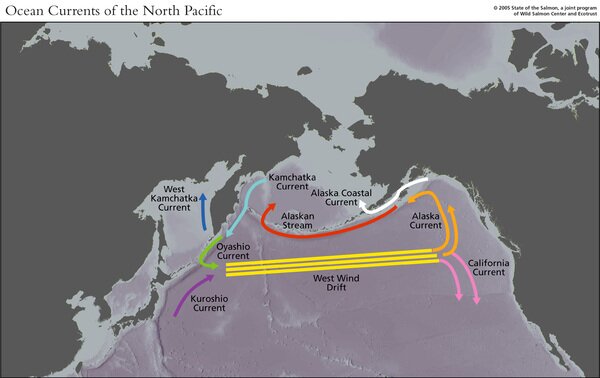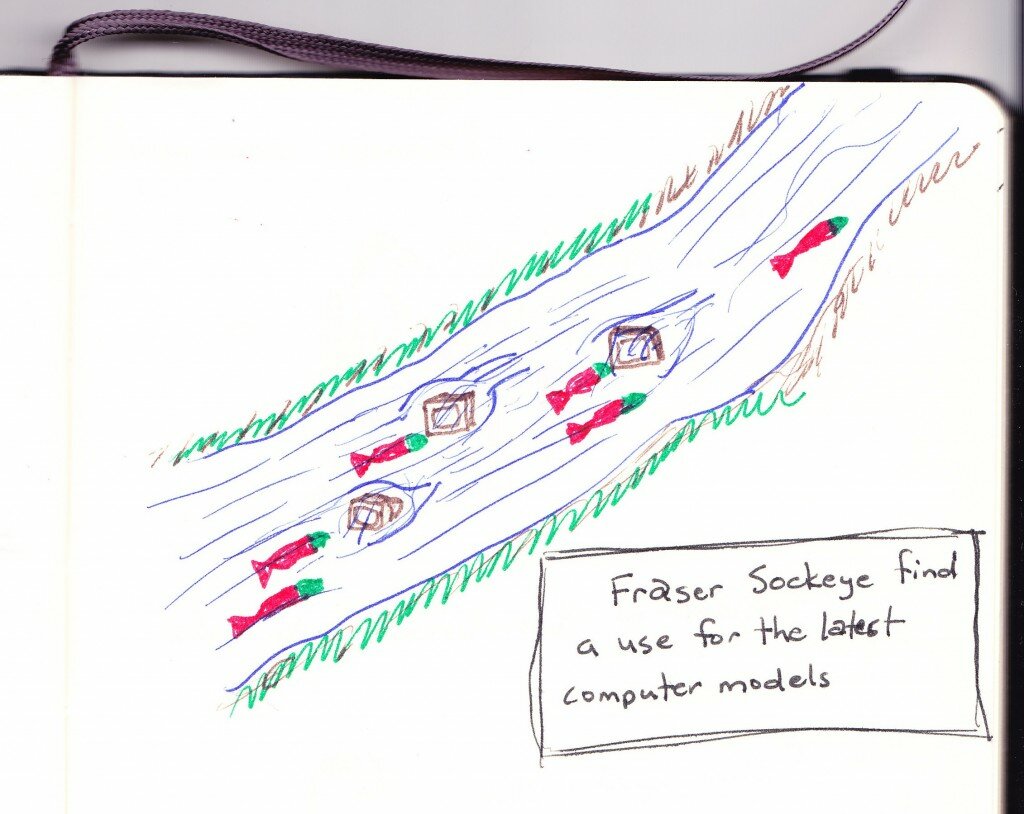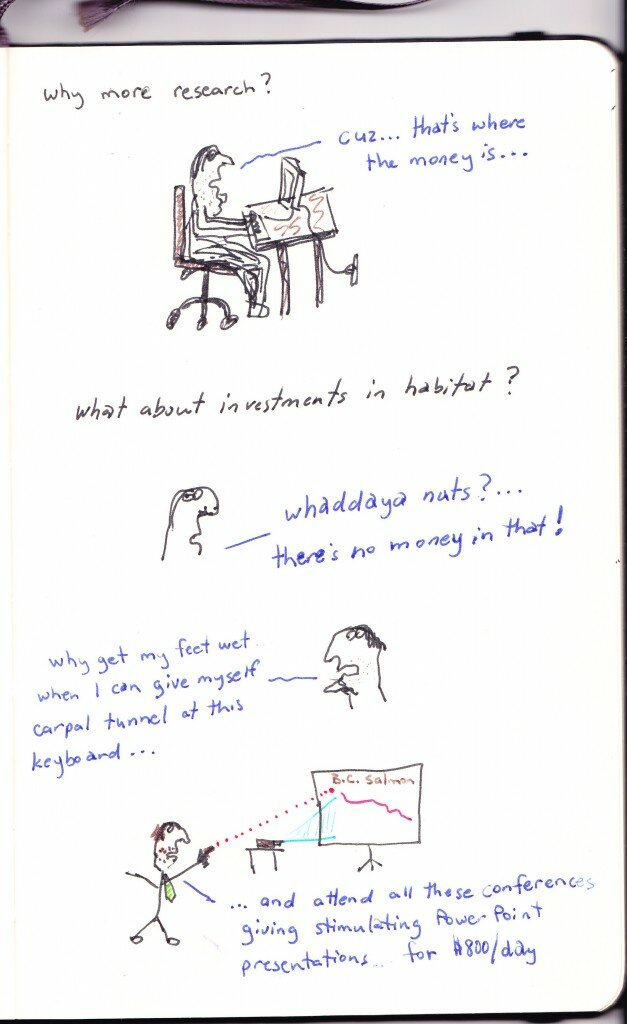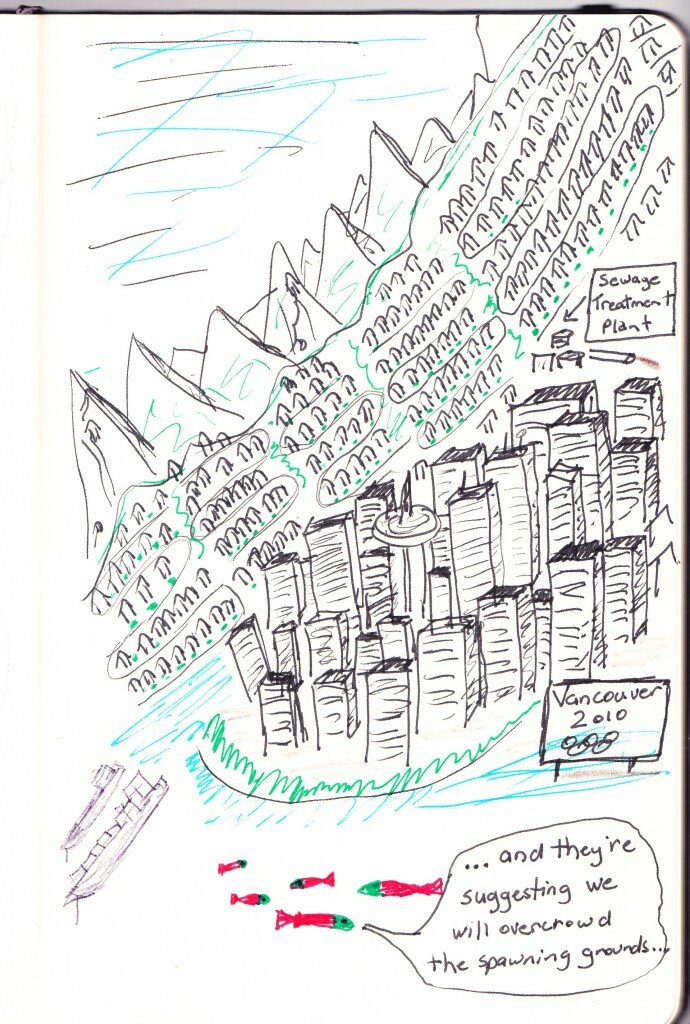As I’m preparing a presentation for the Cohen Commission this week, I recently noticed the on the Cohen Commission website. It’s a pretty sharp little production, some nice work by the P.R. firm hired by the Commission. I especially like some of the graphics — they portray the picture of a sockeye life quite well.
I have a problem though… there is a graph of Fraser sockeye populations early in the presentation. It looks like this (with the exception of the numbers and question marks I’ve added on the left… and it has some color):
 If you look closely on the Cohen Commission video you can see the reference for this graph, little little words on the right:
If you look closely on the Cohen Commission video you can see the reference for this graph, little little words on the right:
Oddly, the graph comes from another “Commission”… ummm, the Mekong River Commission. Yeah, that river in Southeast Asia.
The report is called:
.
By, a Dr. Ferguson from Seattle and Dr. Healey from UBC.
There doesn’t, however, appear to be any references by the Dr.’s to where the graph comes from.
More oddly, this is the only graph I’ve been able to find that presents some history of Fraser sockeye prior to 1948 (the time when the great white knight of DFO galloped onto the scene and data became “reliable”).
Even more, more oddly — this is the best that the Cohen Commission can come up with to document historical Fraser sockeye populations? Some 2-3 page paper from the Mekong River Commission, with few data references?
This isn’t necessarily a criticism of the Cohen Commission… I just thought that they had already plowed through hundreds of thousands of pages of documents from the Department of Fisheries and Oceans. Could not one safely assume that somewhere in there would be a page or two that actually has some data-referenced graphs of historical Fraser sockeye populations?
_ _ _ _
I was recently scolded in an email from a “pre-eminent scientist” here in B.C.:
By the way, you need to get your story straight about how many sockeye salmon there used to be before commercial fisheries.
Yes, please, someone… would the real Fraser sockeye story please stand up and reveal itself!
See… I just keep referring to this 1903 Fisheries Report. Excerpts from the :
This year’s pack has been the largest known in the province amounting to 1,247,215 cases against 1,026,545 in 1897. 1,154,717 cases were sockeye salmon (O. nerka), exceeding the total pack of 1897 of all kinds of salmon. On Fraser River the pack of sockeye in 1901 was 974,911 cases as against 897,115 cases of all kinds in 1897.
If you are curious a case was 48 pounds.

The small print above reads:
Large as this amount is, representing 30,000,000 fish it could have been largely increased, possibly doubled had the canneries had capacity enough to have handled all the fish available during the run. On Fraser river, the canneries placed 200 as the maximum number of fish they could guarantee to take from each boat and for 12 days, from 6th to 17th August this limit was enforced. The fishermen could consequently during this period fish only for a short time each day. During the height of the run they dare not put more than a small length of their net in the water. In some cases nets were sunk and lost from the weight of the fish.
_ _ _ _
The scolding email continues:
Ricker estimated 25-50 million based on early catch data, but Argue found errors in that and produced revised estimates of 12-25 million.
But this doesn’t fit so well with other references such as Northcote and Atagi (1997) “Pacific Salmon Abundance Trends in the Fraser River Watershed Compared with other British Columbia Systems” in “Pacific Salmon and their ecosystems: Status and Future Options” (Stouder, Bisson, and Naiman – editors). You can view most of the book on Google Books – Northcote and Atagi’s chapter starts on page 199: The actual reference is on page 200 and is further referenced to W.E. Ricker articles on Fraser sockeye.
“The historical abundance of pink and sockeye salmon spawners bound for the Fraser River was enormous with runs up to nearly 50 million pink and <160 million sockeye on a big cycle year (Ricker 1950, 1987, 1989).”
One of the tables in the chapter suggests the average “historical” abundance of Fraser sockeye is over 34 million.
“From Ricker (1987) for 1901-1913, using 100 million for the 1901 ‘line’ and 5 million for the 1902, 1903, and 1904 ‘lines’; see also Ricker (1950)”
_ _ _ _
How can there be so much damn variability?
A 1903 Fisheries report states that over 30 million sockeye were canned alone in 1902, with potential to have canned at least that much more. One can presume then that the run was anywhere between 60-100 million sockeye. That’s a far cry from the 12-25 million suggested in the scolding email I received and references to Argue’s research.
How could there only have been 12-25 million if over 30 million were canned alone (around the Fraser mouth)?
And so… could somebody please get the story straight. Because right now we’re somewhere between 12-25 million vs. greater than 160 million as estimates of Fraser sockeye populations pre-commercial fishing.

my graph

